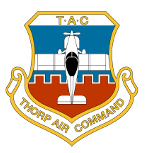A pull from the Marvell Carb manual:
http://www.insightavionics.com/pdf%20fi ... Manual.pdff. BACK-SUCTION TYPE ENRICHMENT SYSTEM, (Small MA-3, MA-4 Carburetors, Ref.
appropriate figure for a particular model). – The back-suction mixture control varies the pressure
in the float chamber between atmospheric pressure and a pressure slightly below atmospheric. This
pressure variation is accomplished by using a control valve located in the float chamber vent line.
The float chamber is vented to the low-pressure area near the venturi through a back suction
channel. This lowers the pressure in the float bowl. When then mixture control is in the rich
position, the vent valve is open and the pressure in the float bowl is raised to essentially the
atmospheric pressure, and a differential pressure exists across the main metering jet. This causes
fuel to flow out of the discharge nozzle. When the mixture control is moved to lean, it closes the
vent valve, and pressure in the float chamber is decreased to a pressure that is essentially the same
as that of the discharge nozzle. This decreased pressure differential decreases the flow of fuel.
So I'm wondering if your MA-3 has a leak in the back-suction control valve or a clog in the vent, because nobody really understands what it does, so it is usually ignored?
The manual also has a good troubleshooting guide, so It's worth reading the whole thing.







